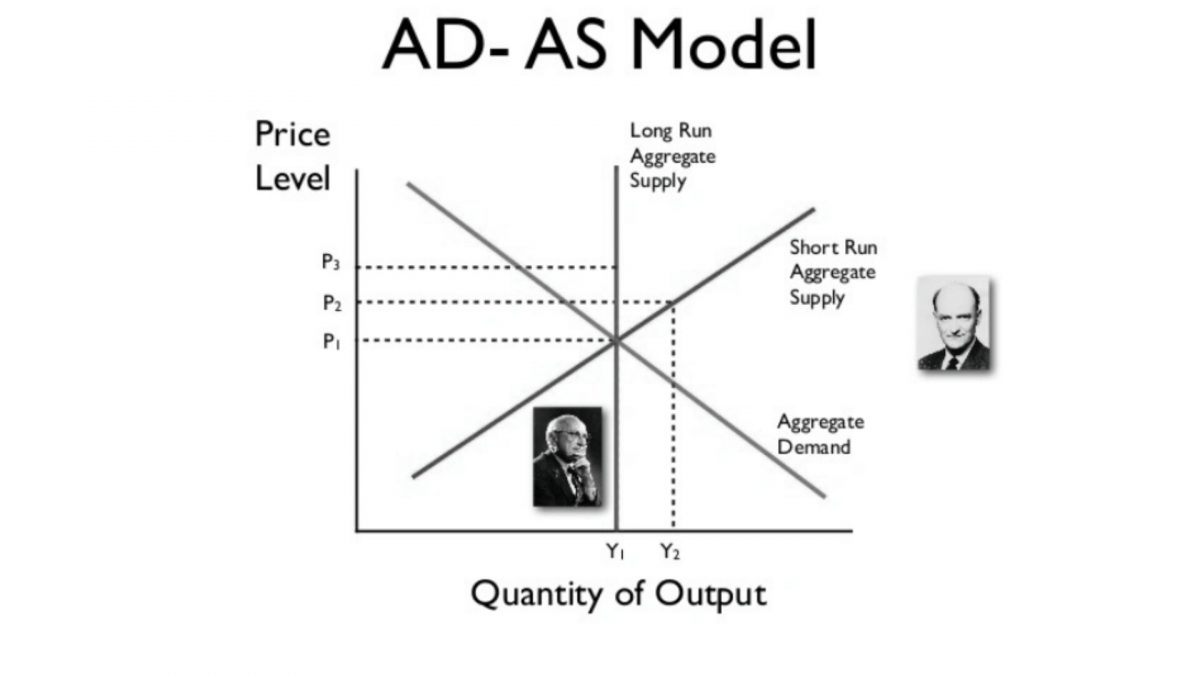Introduction
In the realm of decision-making, the AD-AS (Aggregate Demand-Aggregate Supply) model serves as a mental framework that helps individuals and groups understand the dynamics between macroeconomic factors and their potential consequences. Grounded in human psychology, the AD-AS model influences our day-to-day lives in a myriad of ways, shaping personal choices, business strategies, and public policy-making. By examining this mental model and its prevalence, we can shed light on the fallacies it may lead us to, and discover strategies to make more rational and informed decisions.
Defining the AD-AS Model and Its Relevance
The AD-AS model is an economic tool used to explain fluctuations in output and prices within an economy. It consists of two components: aggregate demand (AD) and aggregate supply (AS). Aggregate demand represents the total demand for goods and services in an economy, while aggregate supply reflects the total production output. The model illustrates how changes in these factors can impact overall economic performance.
This mental model is highly relevant to decision-making processes as it helps us understand how changes in factors such as consumer spending, government policies, and market conditions can affect our desired outcomes. By recognizing and incorporating the AD-AS model into our decision-making, we can make more informed choices and avoid irrational behaviors driven by flawed assumptions.
Examples of the AD-AS Model in Various Contexts
- Personal Life Decisions: Imagine an individual contemplating a major career change. Using the AD-AS model, they might consider factors such as their own skills (aggregate supply), the demand for those skills in the job market (aggregate demand), and the potential impact on their income and job satisfaction. By recognizing that personal decisions are subject to economic forces, the individual can make a more rational assessment of the risks and rewards associated with the career change.
- Business Scenarios: Businesses frequently rely on the AD-AS model to navigate market fluctuations. For instance, a company considering an expansion might analyze the AD-AS model to assess the potential demand for their products or services, the costs of expanding production (aggregate supply), and the impact on prices and profits. Failing to consider these macroeconomic factors could lead to overproduction or underestimating market demand, resulting in financial losses.
- Public Policy-making: Government policymakers often rely on the AD-AS model to formulate effective economic policies. For example, when determining the appropriate level of taxation, policymakers consider the potential impact on consumer spending (aggregate demand), investment (aggregate supply), and overall economic growth. Neglecting to incorporate the AD-AS model could lead to misguided policies that hinder economic stability or exacerbate inequality.
Psychological Biases and Underpinnings of the AD-AS Model
The AD-AS model is prone to several mental biases that can cloud judgment and lead to irrational decision-making. One such bias is anchoring, where individuals rely too heavily on initial information or assumptions. When applying the AD-AS model, anchoring can manifest as an overreliance on outdated data, leading to misinterpretation of current economic conditions.
Another bias is confirmation bias, where individuals seek out information that confirms their preexisting beliefs and ignore contradictory evidence. In the context of the AD-AS model, confirmation bias can lead to a selective interpretation of economic data, reinforcing existing opinions rather than considering alternative perspectives.
Additionally, availability heuristic, a cognitive shortcut, can impact the AD-AS model. This bias causes individuals to rely on easily accessible information rather than thoroughly analyzing a wide range of data. In the AD-AS context, individuals may give excessive weight to recent economic events or news, overlooking broader trends and long-term consequences.
Identifying and Avoiding the AD-AS Model Fallacy
To avoid succumbing to the pitfalls of the AD-AS model, it is crucial to be aware of potential biases and employ strategies for more objective decision-making. Here are some practical tips:
- Seek diverse perspectives: Engage with individuals who have varying viewpoints and expertise. This can help challenge your own assumptions and mitigate confirmation bias.
- Stay informed: Continuously update your knowledge of economic trends, ensuring you have a well-rounded understanding of the factors that influence the AD-AS model. Rely on reputable sources and consider historical data to avoid being swayed by recent events.
- Embrace critical thinking: Actively question your own assumptions and challenge prevailing narratives. Encourage a healthy skepticism and consider the limitations and potential biases of the AD-AS model itself.
- Think long-term: Avoid falling into the availability heuristic trap by considering the broader context and long-term implications of economic decisions. Avoid making judgments solely based on recent events or anecdotal evidence.
Conclusion
The AD-AS model is a powerful mental model that shapes our decision-making processes in various spheres of life. By understanding the model’s dynamics and being mindful of the psychological biases associated with it, we can navigate the complexities of economic decision-making more effectively. Awareness of the AD-AS model empowers individuals and groups to make rational choices, avoiding irrational behaviors that are contrary to their best interests. By employing critical thinking and seeking diverse perspectives, we can embrace a more objective and informed approach to decision-making, leading to better outcomes for ourselves and society as a whole.
